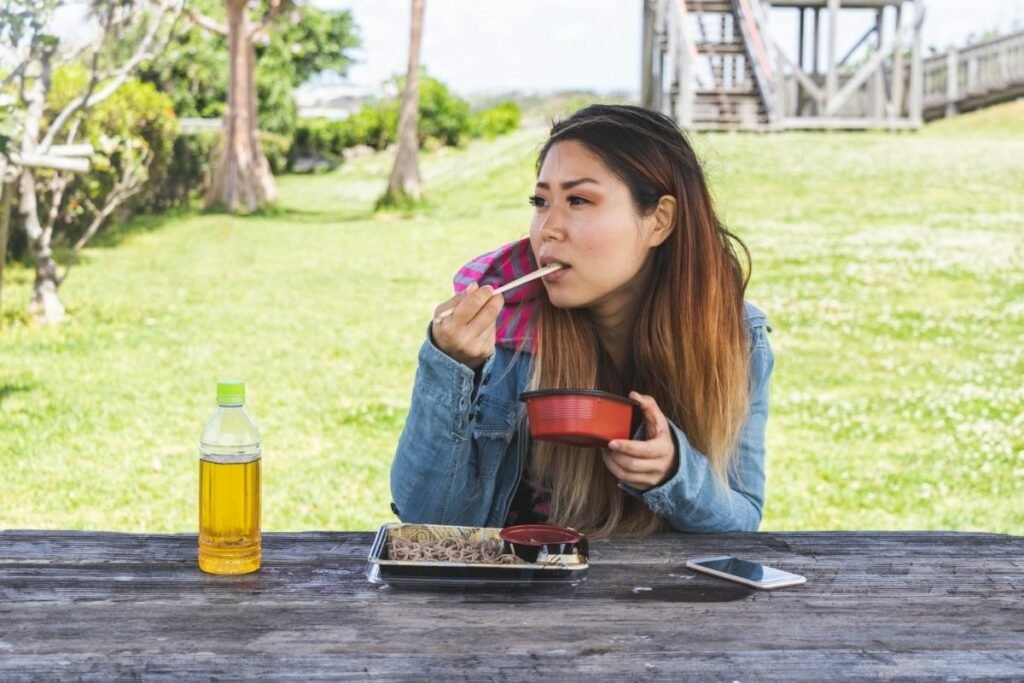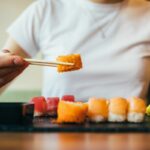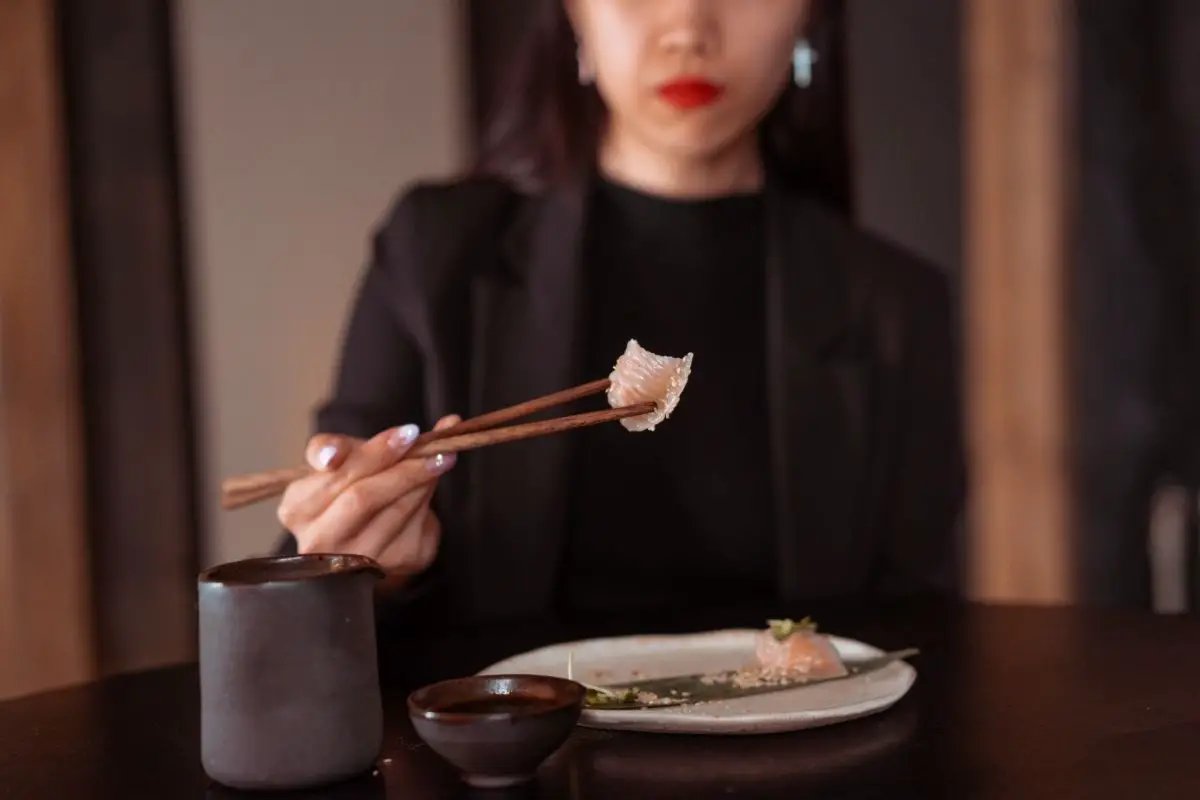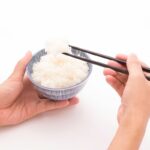Modern Japanese food culture is synonymous with chopsticks, this much we know. But how did this humble utensil become so intrinsically linked to the rise of the Japanese empire?
In this article, we are going to take a trip down history’s lane and look at the very first recorded origin of chopsticks.
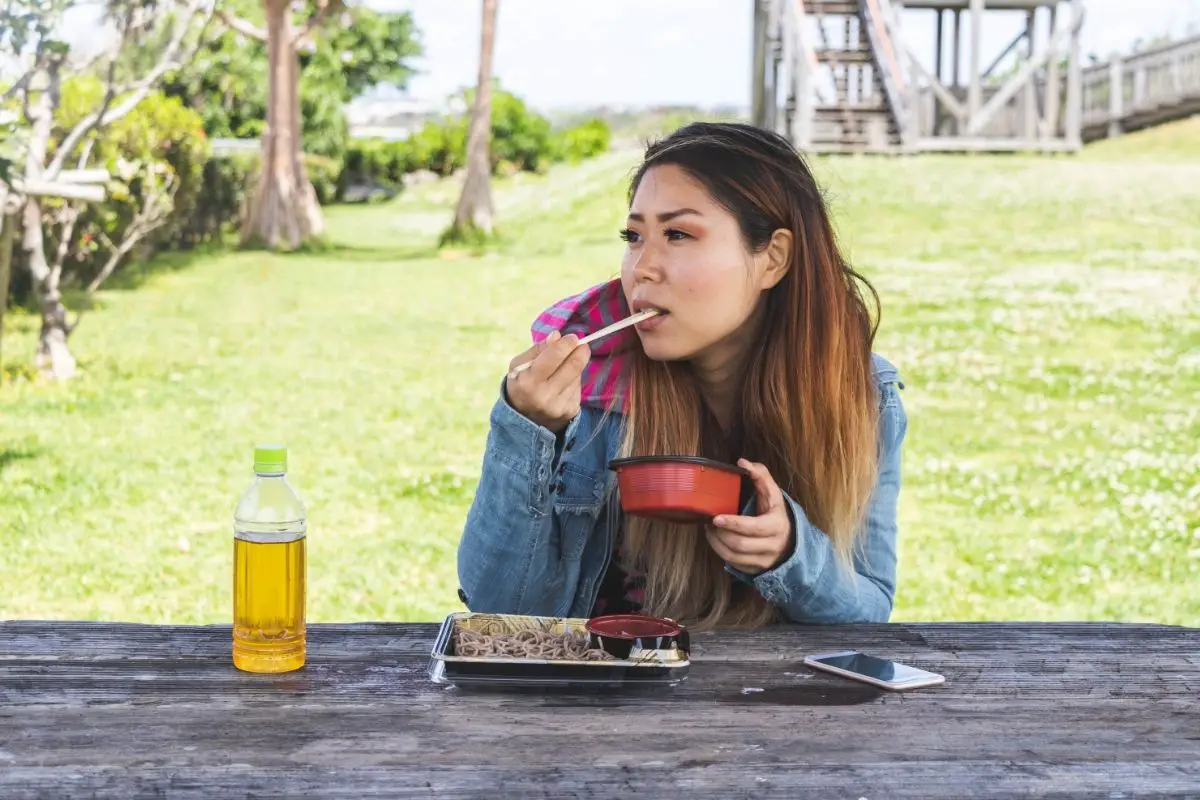
Once you’re clued into how and where chopsticks came to be, we will focus on Japan’s relationship with chopsticks, and finish with five dining rules where Japanese chopstick etiquette is concerned.
Origin Of Chopsticks
Although the period in which humans first started using chopstick-like utensils to eat is debatable, there is no question that chopsticks originated in Ancient China.
Some historians say the first recordings of slender twigs being used to eat food from a hot pot dates back 6,000 – 9,000 years ago, while others are sure that chopsticks were only invented 5,000 years ago.
Whichever it is, one thing is for certain, and that is that chopsticks have been helping people to eat for a long old time.
History Of Chopsticks In Japan
The Japanese word for chopstick is “hashi”, which also means bridge in Japanese. The idea that chopsticks offered a bridge between the mortal and the divine in early Japanese society is evidenced by the distinctive artwork, shapes, and materials used in chopsticks.
The Japanese believed that when a pair of chopsticks were offered as a gift to a deity, the pair of chopsticks would become enchanted by that deity.
If food that was also offered to the deity was eaten with the inhabited chopsticks, then the Japanese believed they had dined with the immortal.
By the year 500 AD chopsticks had been popularized in many Asian countries like Korea, Vietnam, and Japan.
The first recorded Japanese chopsticks were made out of bamboo, and joined at their top, resembling and being used more like tweezers, rather than traditional Chinese chopsticks.
These joined-at-the-hip Japanese chopsticks held a lot of meaning and were strictly used at religious ceremonies.
Fast forward to 1878 and it was the Japanese who invented the now-ubiquitous disposable set of chopsticks. Bamboo and other light-to-touch wood varieties were still used by the majority of Japanese people.
However, the wealthy members of society would eat with decorative chopsticks made of coral, ivory, jade, and brass.
The most honored, privileged, and powerful members of Japanese society were even known to eat with chopstick sets made of pure silver, as it was believed that the silver would corrode if it was to come into contact with poisonous food.
Are Chopsticks Still Used In Japan Today?
In modern Japan, chopsticks are the number 1 utensil for eating food (see also ‘Do Bento Boxes Keep Food Warm?‘). They are used as an everyday utensil for eating a wide variety of dishes that feature rice, noodles, vegetables, beans, meat, and salad.
So large is the Japanese love of chopsticks that they are even well versed in picking up super challenging and ultra-flimsy chunks of silky tofu with the utensils.
Japanese food culture also champions short grain rice which has a particularly sticky texture that is tailor-made for chopstick use.
The sticky nature of short-grain rice helps each piece to join forces with the next and form bite-sized chunks that can be swiftly picked up by chopsticks.
However, and though it is hard to believe, not all meals are necessarily eaten with chopsticks in Japan.
For example, certain cuts of on-bone steak won’t be served with chopsticks as it is considered impractical and rude to eat them with chopsticks, and they are served with a knife and fork instead (see also ‘ How To Sharpen A Japanese Knife’).
In general, though, steak, pork, chicken, and fish will be sliced and prepared either before or after cooking to make eating them with chopsticks practical and modest.
Chopstick Etiquette In Japan
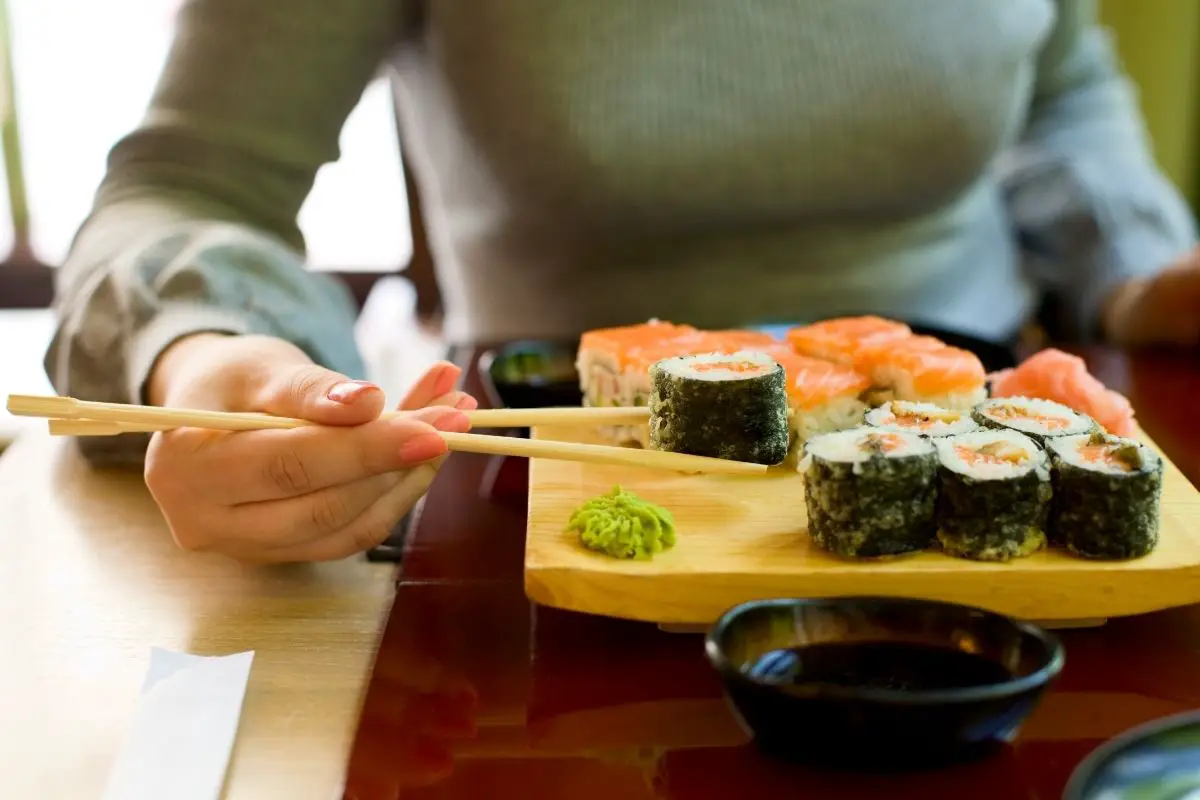
Across the entirety of Japanese society, there is a deep resonance with the correct way of doing things. Rudeness is not tolerated in Japan, and learning and following the cultural views of the Japanese people is strongly recommended when visiting the country.
This importance on manners and the respectful order of things is no more evident than when it comes to Japanese food culture and Japanese eating habits.
Chopsticks are intrinsic to Japanese food culture, which is why eating with chopsticks in Japan comes with its own list of rules and etiquette.
Even if you’re well versed in the correct and polite way of eating with chopsticks, there are some golden rules that pertain specifically to eating with chopsticks in Japan.
They differ from other Asian countries that use chopsticks on a daily basis, so it really does pay to sharpen up your chopstick knowledge before arriving in Japan.
Tapping Chopsticks Against Tableware
Picking up your chopsticks and proceeding to play your favorite drum solo against your empty plate at the end of your meal may seem like a funny idea at the time, but this is considered extremely rude in Japan.
Not only is it classed as childish behavior that doesn’t bode well with respectful dining, but, it is also thought to attract evil spirits, and nobody wants that. So best to resist the urge and keep your tap, tap, tapping to yourself where chopsticks are used in Japan (to find out what other countries use chopsticks, read here).
Don’t Pass Food With Chopsticks
Passing a piece of food from your plate to your friend’s plate using chopsticks is another big no-no in Japan. This ceremonious act is a symbol of passing bones that should only take place at a loved one’s cremation, and certainly not the restaurant.
If you must get your friend to try some of your food, then it is recommended to place it on a separate plate first and let them pick it up on their own accord.
Rubbing Disposable Chopsticks Together
After breaking disposable chopsticks apart, some diners may feel the insatiable urge to vigorously rub their chopsticks together to remove the wooden shards that may be present from the breaking process, don’t be one of them.
This is a sign of disrespect to the restaurant you are in that you believe their chopsticks aren’t good enough quality for you. If there does happen to be splinters of wood on your chopsticks, remove them in a discrete way, preferably under the table.
Don’t Stick Chopsticks Straight Up In A Bowl Of Rice
Known locally as “Tate-Bashi”, sticking chopsticks straight up in a bowl of rice is the most disrespectful chopstick taboo in all of Japan.
Similar to the passing of food with chopsticks, this act is a ceremonious one that should only be performed to symbolize the passing of a loved one.
If you want to take a break from your food, make sure you place your chopsticks in a horizontal manner on top of an unused plate.
If you place them horizontally across your plate/ bowl of food this may give the wrong impression to your waiter that you don’t like the food and are finished with it.
Don’t Cross Your Chopsticks Into An X Shape
This one is a blanket rule across most of Asia and should be avoided at all costs. Holding chopsticks and crossing them in an x-shape, as well as placing them on the table in an x-shape both symbolize death in Japan.
If you are placing your chopsticks down on the table or holding them, make sure that they run parallel with your body and don’t cross each other.
Summary
Although the Japanese people didn’t invent chopsticks, once they caught wind of the symbolic nature of chopsticks, they welcomed them into their culture with open minds and hands.
In modern society it is hard to define where the chopstick starts and Japanese culture ends – they are one and the same.
Brushing up on your chopstick etiquette is, therefore, extremely important to do before taking a trip to Japan. Not only will the locals appreciate you for learning their cultural values, but you will feel better about your time spent in Japan, we can assure you of that.

